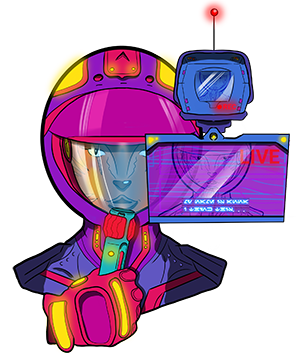
In today’s gaming landscape, accessibility isn’t just a thoughtful addition—it’s a standard players expect. Video game developers are working hard to ensure that players, regardless of physical, sensory, or cognitive abilities, can enjoy fully immersive gaming experiences. Accessibility has grown from a niche consideration to an essential aspect of game development, marking a shift towards inclusivity. Let’s take a look at how internationalization enhances inclusivity.
Recognizing Accessibility in Gaming
Accessibility in gaming received a significant boost with the inclusion of awards like the “Innovation in Accessibility” category at The Game Awards in 2020. This recognition has put accessibility at the forefront of game design, driving industry-wide efforts to accommodate diverse needs. Customizable controls, colorblind modes, closed captions, and audio descriptions are just a few of the features becoming common as developers acknowledge the importance of making games inclusive.
These adaptations ensure that every player has the opportunity to engage meaningfully with video games, regardless of their individual needs.
The Role of Internationalization in Accessibility
Accessibility in gaming doesn’t end with design. Internationalization (i18n) involves adapting a game for different languages and cultural contexts. This process plays a pivotal role in expanding accessibility to global audiences. By working hand in hand, internationalization and accessibility allow games to be as enjoyable for players in different countries as they are for local audiences, ultimately reaching a wider and more diverse player base.
Here’s how internationalization enhances accessibility:

Multilingual Support
- Fonts, icons, and symbols: With i18n, games are designed with customizable fonts that are often dyslexia-friendly, as well as with universally recognized symbols that support easy navigation. This design consideration ensures that players from various linguistic backgrounds can easily understand in-game instructions.
- Alternative text for art and images: Adding alternative text to visual elements is crucial for visually impaired players. When paired with culturally relevant visuals, it creates an immersive experience that resonates with diverse players.
- Culturally sensitive support: Clear, culturally relevant help text and instructions that align with the player’s language and context are essential for smooth gameplay. These elements ensure players don’t feel alienated or confused by language-specific nuances or unfamiliar references.
Enhanced User Experience (UX)

- Personalized UI and options: Games that detect linguistic preferences and offer adjustable text size, color contrast, and audio cues create a customizable experience for players with specific needs. This personalization enhances accessibility, especially for those with visual impairments or sensory sensitivities.
- Cross-platform playability: Internationalization allows games to adapt across various platforms and devices, incorporating flexible controls and remappable buttons that accommodate players with mobility impairments.
- Content adaptability: Features like region-specific date formats, time displays, and content structures enhance intuitive play. By making games feel familiar and accessible, internationalization helps players focus more on the game and less on navigating unfamiliar interfaces.
Quality Control in Accessibility

- Testing for compatibility: Quality control is essential to ensure accessibility features—such as screen readers, subtitles, and alternative input devices—are compatible across multiple languages and platforms.
- Ensuring feature consistency: After every localization update, games must be tested to ensure accessibility features are functional and operational. This commitment to quality is key to maintaining an inclusive gaming experience.
The Takeaway
Internationalization extends far beyond global reach; it’s a vital tool in making gaming more inclusive and accessible. By focusing on both accessibility and i18n, developers create games that can be enjoyed by people from all walks of life, making gaming an inclusive, welcoming space for everyone.



